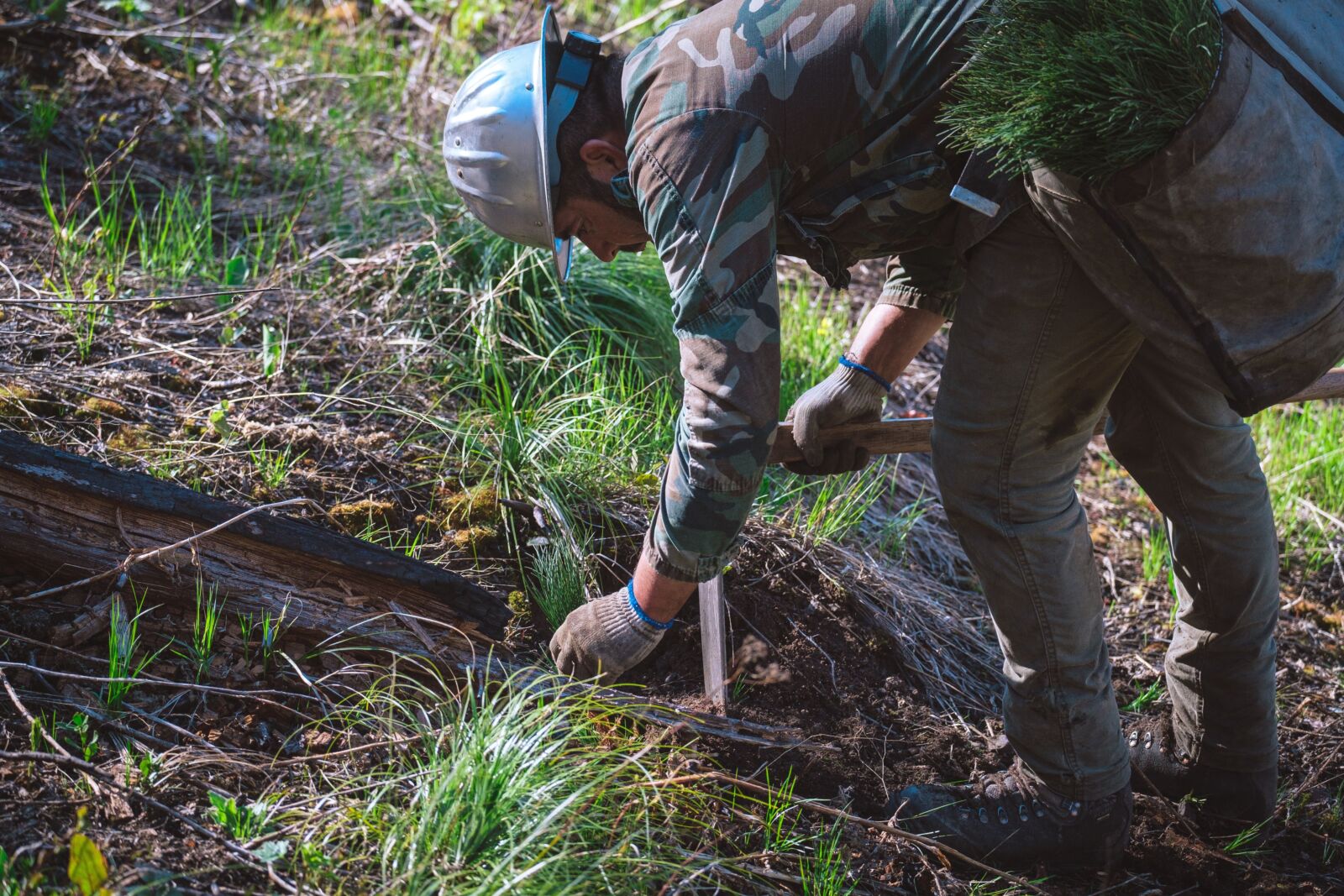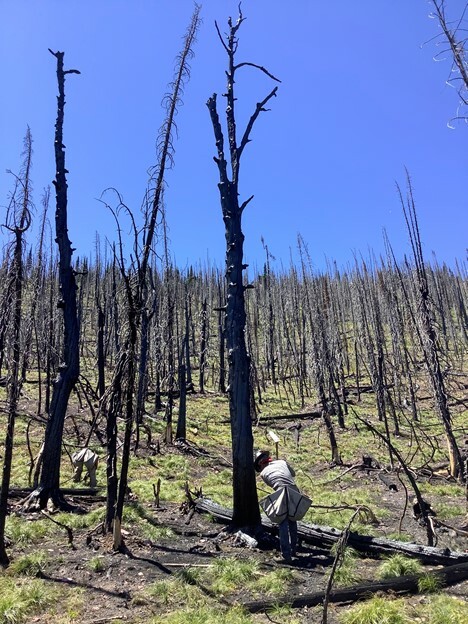Since 2012, the NFF has funded nearly 20 wildfire reforestation projects on Lolo National Forest in Western Montana, planting more than 830,000 trees on over 3,500 acres.
Lolo National Forest spans two million acres across Western Montana and provides habitat for recreationists and wildlife alike. Home to iconic predators like grizzly bears and wolves that need space to roam, the Lolo is surrounded by other National Forests and the Flathead Indian Reservation. It also happens to encircle Missoula, Montana, the location of NFF's national office, making it a favorite to see our projects in action.
Unfortunately, Lolo National Forest is also the site of several major wildfires over the past few years. The NFF has funded nearly 20 projects on the Lolo, most since 2018, and all have planted trees for wildfire recovery. These efforts equate to nearly a million seedlings to support post-fire recovery.
The NFF has supported nearly 20 projects on Lolo National Forest since 2012, all for wildfire recovery.

Site of the 2023 planting project for Rice Ridge recovery. Photo by the NFF.
Like many National Forests in the West, high-severity fire is an increasing hazard on the Lolo due to warmer, drier conditions caused by climate change and decades of fire suppression. With an eye to the future, our partners at the Forest Service are thinking of potential climate scenarios with reforestation efforts like these. Here, that means planting more resilient native seedlings and adjusting species composition and locations for a better shot at forest recovery under future conditions.

Ponderosa pine seedlings growing at the site of a 2020 Rice Ridge project on Lolo National Forest. Photo by the NFF.
One such wildfire was the Rice Ridge Fire of 2017. The lightening-caused fire began near the western Montana town of Seeley Lake, burning more than 160,000 acres and filling the air with intense smoke. The smoke was so bad that particulate measurements reached beyond a recordable level on air quality monitoring equipment. More than 66 percent of the fire occurred on the Lolo, with the severity of the fire varying across the burn area.
Since the fire, the NFF has funded five Rice Ridge Fire reforestation projects. Ponderosa pine, western larch, and whitebark pine seedlings were planted on areas that burned at high intensity. These native species were selected by the U.S. Forest Service for their resilience and ecological benefits, along with the species' mix lost and lack of regeneration after the fire.

Planting a ponderosa pine seedling on the Rice Ridge Fire burn area. Photo by Dave Gardner Creative.
Ponderosa pine and western larch are both fire-adapted trees that are not susceptible to Douglas-fir beetle, a harmful bark beetle that generally attacks Douglas-fir trees. The whitebark pine seedlings will help restore a critical whitebark population on high elevation areas affected by the fire.

Planting at the base of a whitebark pine burned in the Rice Ridge Fire, Lolo National Forest. Photo by the U.S. Forest Service.
Prior to the fire, the whitebark that were here showed some resistance to white pine blister rust, a disease caused by an introduced fungus, and one of the many threats to whitebark pine as a species. The fire burned at such an intensity that it killed most of these seed-producing whitebark pines, leaving an unlikely chance for natural regeneration. Thanks to our partners at the Forest Service and their work to conserve whitebark pine on National Forests, seeds from the killed whitebark trees had been collected prior to the fire and were available to begin restoration efforts.
You can help! Support efforts like these through our Wildfire Reforestation Fund.
Header and thumbnail photos by Dave Gardner Creative.

